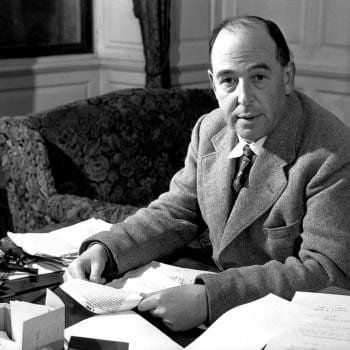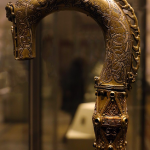St Ignatius Loyola’s memorial today reminds us of the role of the Christian soldier. Wounded in battle, Ignatius began to read the Sacred Scriptures and was truly and completely converted. He went on to found the Society of Jesus as a kind of military style religious missionary order.
The idea of the church militant is there not only in the battles of the Old Testament, but in our Lord’s stern words that he comes not to bring peace but a sword.
St Paul writes repeatedly with military imagery and the saints down the ages have all, in one way or another, and to a greater or lesser extent, been aware of the need for battle and the fact that we are engaged in a great conflict with evil.
St Paul says, “Finally, be strong in the Lord and in his mighty power. Put on the full armor of God, so that you can take your stand against the devil’s schemes. For our struggle is not against flesh and blood, but against the rulers, against the authorities, against the powers of this dark world and against the spiritual forces of evil in the heavenly realms. Therefore put on the full armor of God, so that when the day of evil comes, you may be able to stand your ground, and after you have done everything, to stand. Stand firm then, with the belt of truth buckled around your waist, with the breastplate of righteousness in place,15 and with your feet fitted with the readiness that comes from the gospel of peace. In addition to all this, take up the shield of faith, with which you can extinguish all the flaming arrows of the evil one. 17 Take the helmet of salvation and the sword of the Spirit, which is the word of God.”
St Therese of Lisieux cries out, “Sanctity! It must be one at the point of a sword!”
The church today in the developed world, however, is too often the church hesitant rather than the church militant.
Sated by our materialism and comfort, afraid to take a stand lest we suffer financial deprivation, we shut up. We look the other way. We tiptoe around the problems.
Catholics, like most other Christian in America want to preach a greeting card kind of Christianity–all best wishes, sentimental cliches, schmaltzy music and feel good homilies.
We’ve sucked up the message of the world that it is all about tolerance, kindness, being nice and never offending anyone.
But in the gospel today Jesus says, “You cannot be my disciple unless you hate your brother and father and sister and mother.”
What does this difficult saying mean? It must mean that each one of us must stand up for the truth and that sometimes that means division even within families.
I am convinced that at some point in the Christian life each one of the baptized will be called on to take a stand. It might be something small or something great. We will be given a test. The right choice will be clear. The consequences of that choice will be clear and we will find our courage or we will not.
At that point we must, each one of say with Joshua the warrior, “Choose you this day whom you will serve, but as for me and my house. We will serve the Lord.”







 Should the Catholic Church adapt herself and get up to date?
Should the Catholic Church adapt herself and get up to date?










